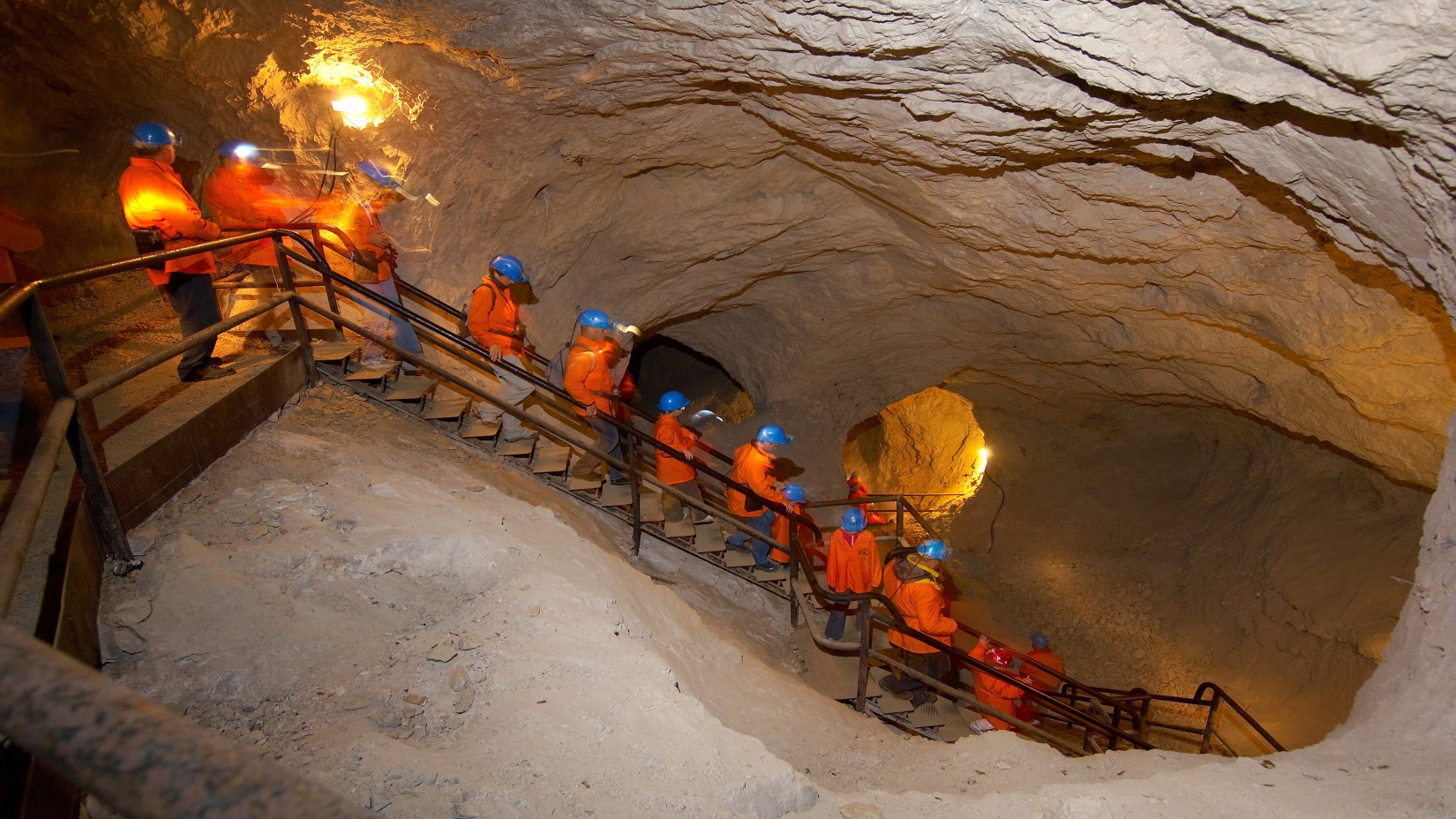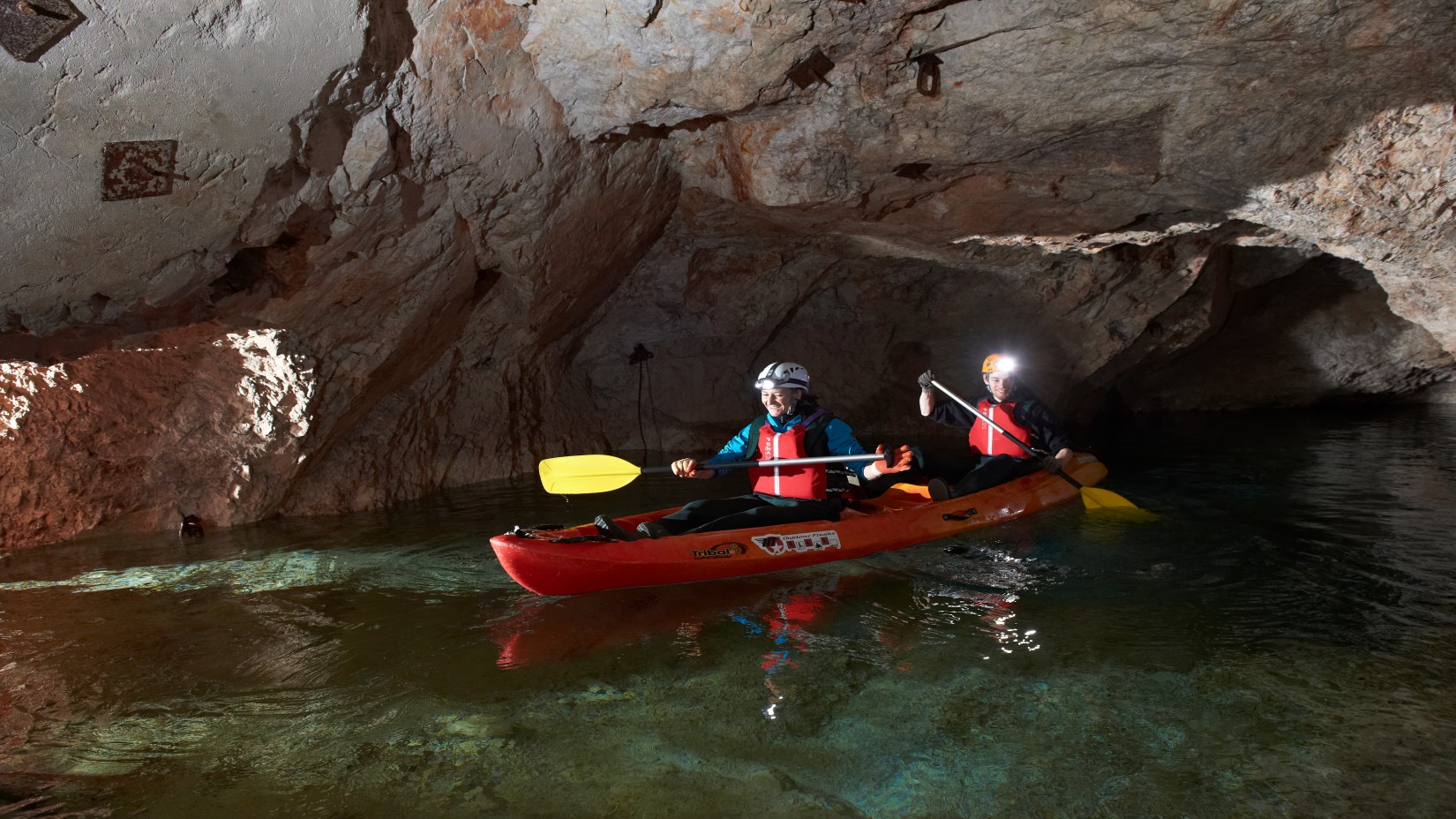Slovenia is as captivating below as it is above. Attesting to this fact is the world-famous Postojna Cave. Its incredible underground formations and the indigenous creature called “the human fish” have been attracting tourists for 200 years. A less known but equally impressive system of caves are the nearby Škocjan Caves, listed among UNESCO’s world heritage sites.
However, Slovenia’s unique karst topography has blessed its lands with numerous other caves, which are gaining in popularity with the recreational pastime called caving.

Local and foreign tourists join expert speleologists in exploring the underground world in different locations around the country. Guided caving tours of non-commercial caves are a perfect way of exploring this fascinating subterranean realm, observing the surprising diversity of cave wildlife and learning a great deal about these mysterious geological phenomena.
Unbeknownst to many, a pair of interlinked small caves, Mala and Velika Pasica, are hiding in not so plain sight just outside the capital city of Ljubljana. Used as shelters and storage units during WWII, these caves present visitors with lovely dripstones and bizarre sculptures, especially appealing to young adventurers. If you happen to be in the area, these underground gems make a superb day-trip.
You’re probably familiar with Lake Bled, the celebrated stunner among glacial Alpine lakes. But did you know there’s a spectacular cave located just a stone’s throw away? On the edge of the gorgeous Jelovica Plateau stands a giant hill called Babji Zob (Hag’s Tooth), and below this peculiar rocky giant lies one of the oldest caves in Slovenia and the largest stalactite cave in the Julian Alps.
The Babji Zob Cave was discovered around 1600 and presents visitors with wonderful stalactites, crystals and fossils that make up its passages and tunnels. The cave's main attraction is the Hall of Images, with its large, colourful formations and pillars. For the more adventurous caving enthusiasts, more ‘extreme’ expeditions are organized, which involve abseiling into the deeper parts of the cave and present a truly authentic caving experience. Perhaps not the best idea for the centrophobic or those suffering with vertigo, yet a super safe and exciting experience indeed.
From Bled to Predjama, home of the largest cave castle in the world. This medieval marvel is built over the second longest Slovenian show cave. An impressive 14 kilometres of tunnels have been discovered and archaeological remains dating back to the Stone Age have been found. Besides regular cave tours, deeper sections of the cave in the company of professional explorers, who take visitors through challenging passages and slippery water barriers. Whichever caving experience you opt for, be sure to check out the exceptionally well-preserved Predjama Castle as well. It takes cave-dwelling to a completely different level.

Another highly recommended underground adventure is cave kayaking. Strictly speaking, this activity doesn’t fall under the caving category, as it involves paddling in a flooded mine under a mountain in the picturesque region of Carinthia. That said, it does take place 700 metres under the Earth’s surface where visitors explore a labyrinth of submerged tunnels, excavation sites and incredible underground lakes. Navigating the mysterious narrow passages might not be ideal for claustrophobics, but it’s very safe and just as exciting as it sounds.
Related: The Beauty of Hiking Slovenia






